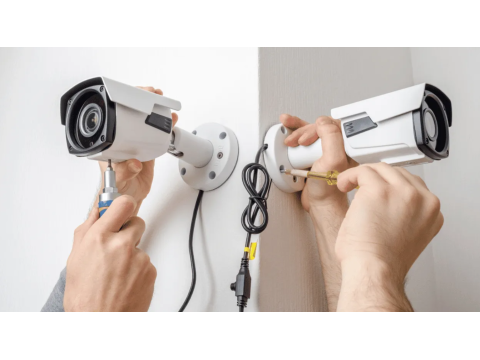How to Set Up and Optimize Surveillance Camera Recording
Recording is a critical feature of surveillance systems. Properly configuring your cameras ensures efficient storage use and reliable event monitoring. Below, we explore the essential settings and advanced features to optimize your system.
Basic Recording Settings
Resolution
- Choose resolution based on coverage area and detail requirements:
- 1080p: Ideal for small rooms or limited areas.
- 2K/4K: Best for large spaces requiring high detail.
- Remember: Higher resolution consumes more storage.
- Choose resolution based on coverage area and detail requirements:
Frame Rate
- Standard: 25–30 fps for smooth motion.
- Adjust to 15–20 fps for static environments or 50–60 fps for fast-motion areas.
Compression Codecs
- Use H.265 (HEVC) for superior compression and storage savings.
- Ensure compatibility with existing hardware and software.
Bitrate
- Opt for Variable Bitrate (VBR) to dynamically adjust data rates, balancing quality and storage.
- Avoid Constant Bitrate (CBR) unless stability is critical.
Recording Modes
Continuous Recording
- Suitable for 24/7 surveillance but requires significant storage.
- Use cyclic overwrite to manage space effectively.
Motion Detection Recording
- Activates only upon detecting movement, saving storage space.
- Configure sensitivity and detection zones to minimize false alarms.
Scheduled Recording
- Automate recording based on time schedules (e.g., full-time during business hours, motion-based at night).
Advanced Features and Analytics
Facial and License Plate Recognition
- Integrate with recording to focus on specific events or individuals.
Virtual Line Crossing
- Trigger recordings when predefined boundaries are crossed.
Visitor Counting
- Useful for retail analytics, activating recording during peak hours.
Storage and Backup Management
Data Storage Policies
- Define retention periods and automatically delete outdated recordings to manage disk space.
Backup Solutions
- Set up scheduled backups to external drives or cloud services to secure critical footage.
Performance Optimization
Network Settings for IP Cameras
- Prioritize bandwidth for video streams.
- Use buffering to reduce interruptions.
Quality Adjustment for Remote Access
- Use lower resolution for live previews to minimize system load.
Conclusion
Proper configuration of surveillance camera recording involves balancing quality, storage efficiency, and usability. By leveraging advanced features like motion detection and analytics, you can create a robust and reliable security system. For specialized needs, consult professionals to ensure optimal setup tailored to your environment.

